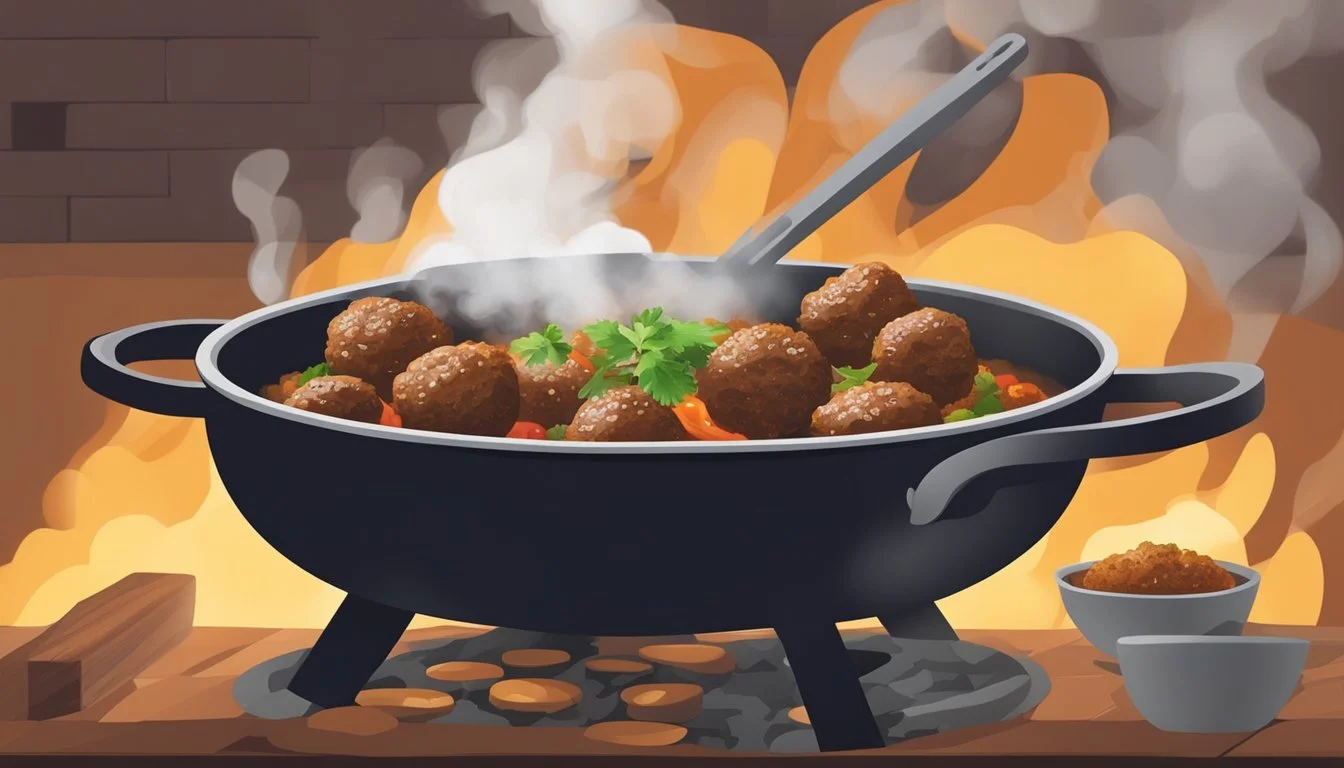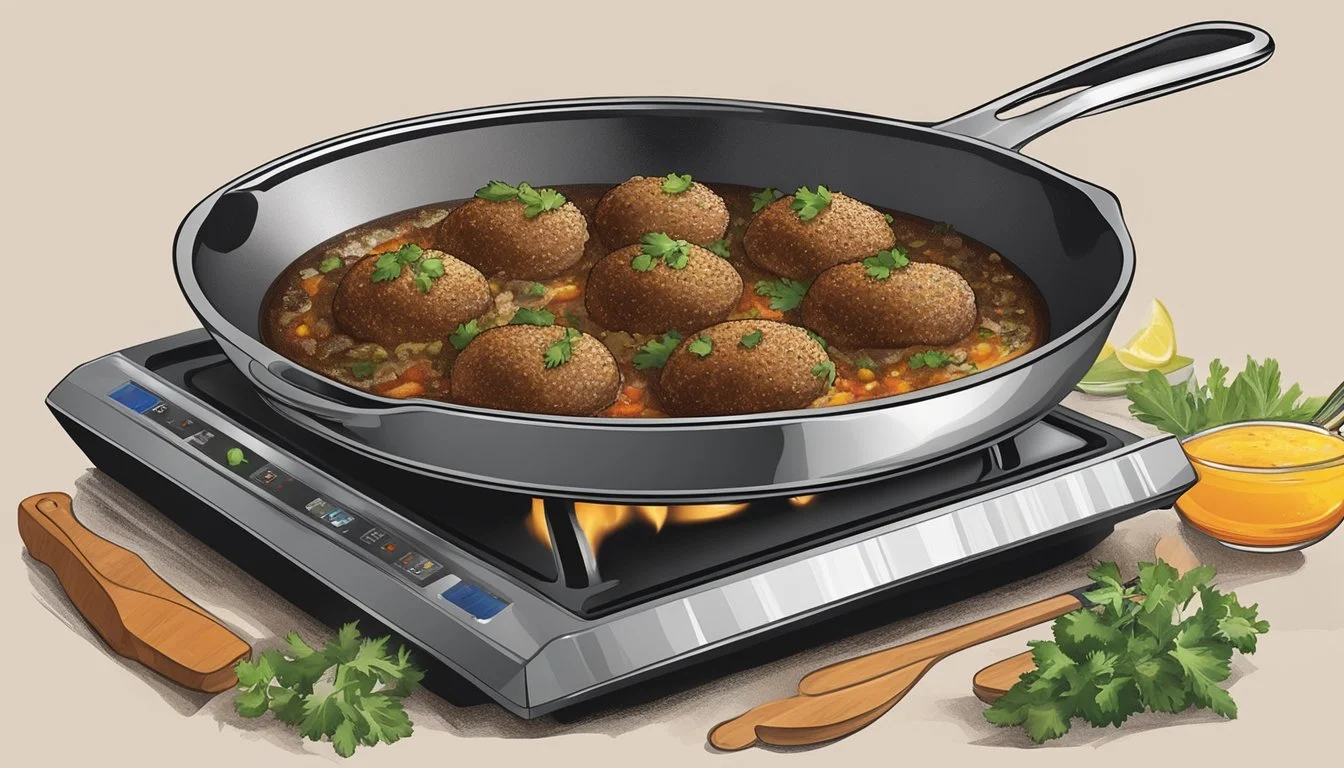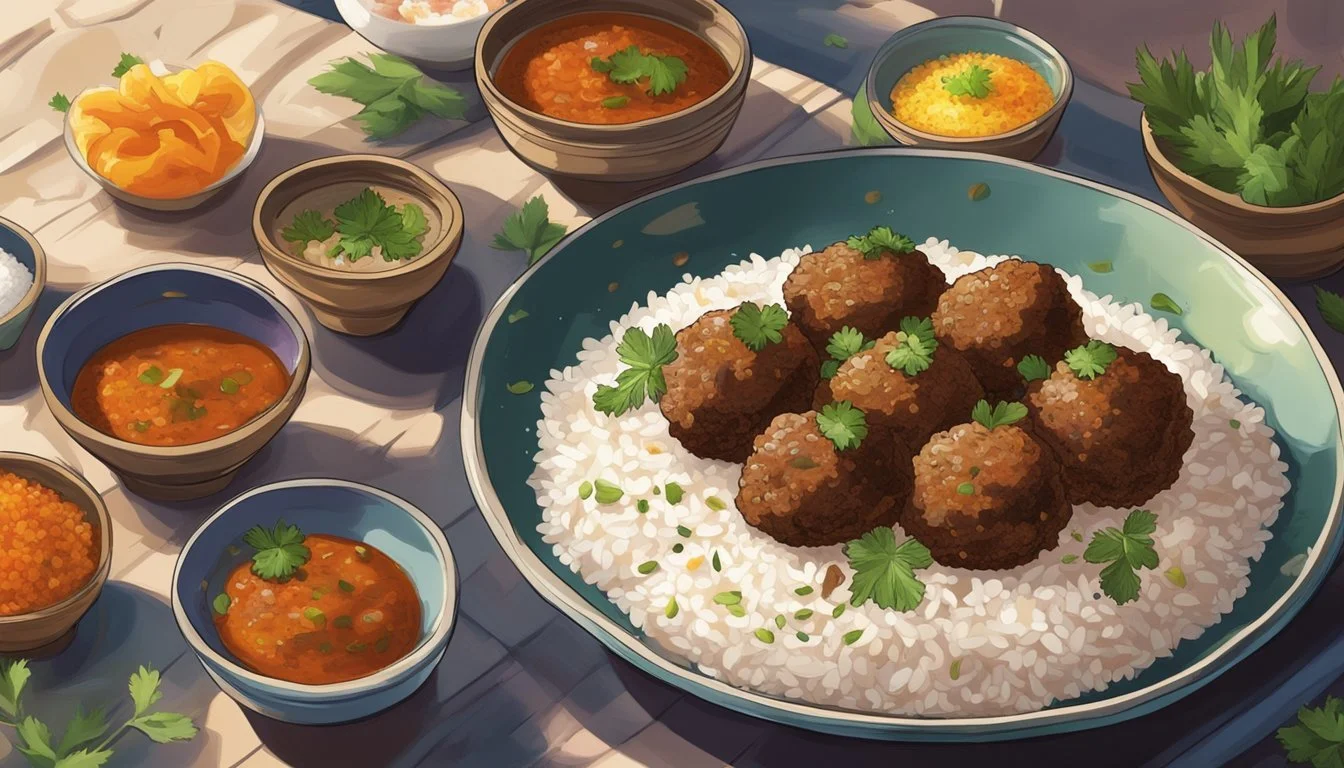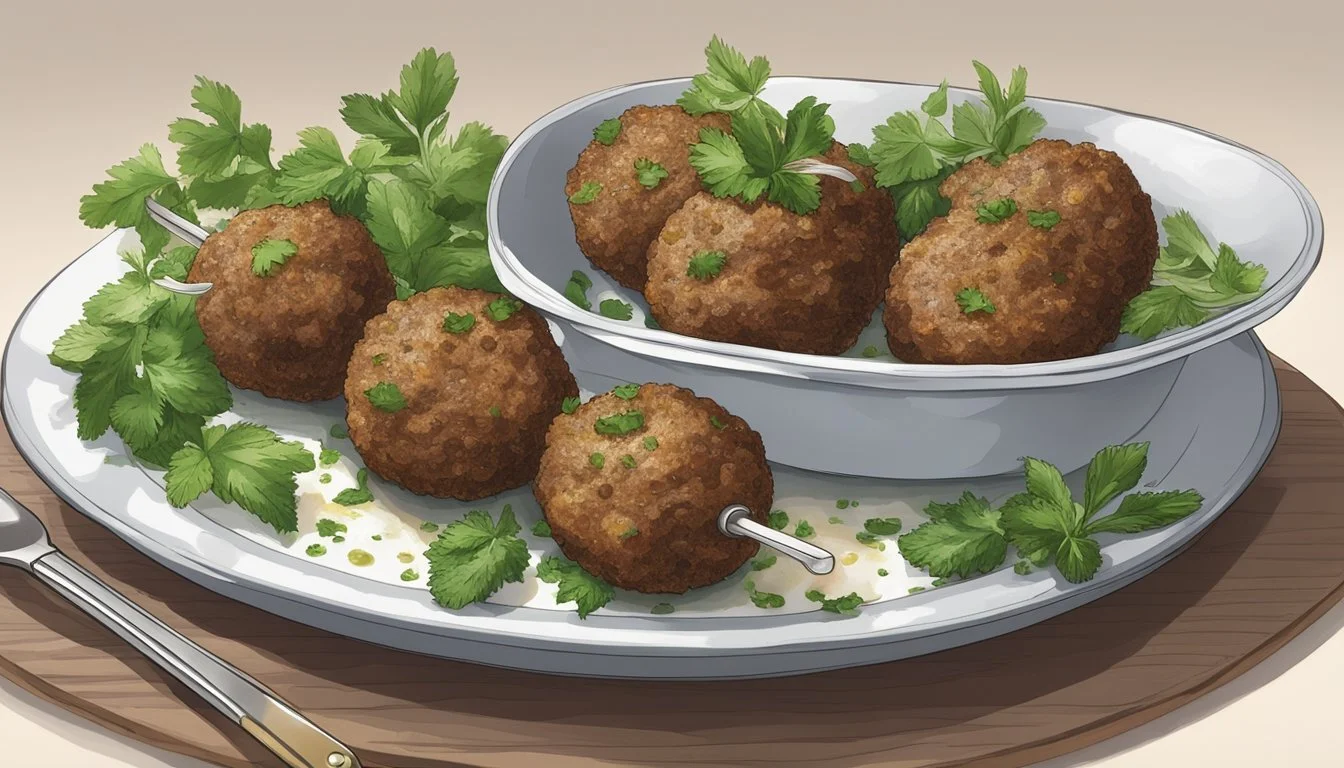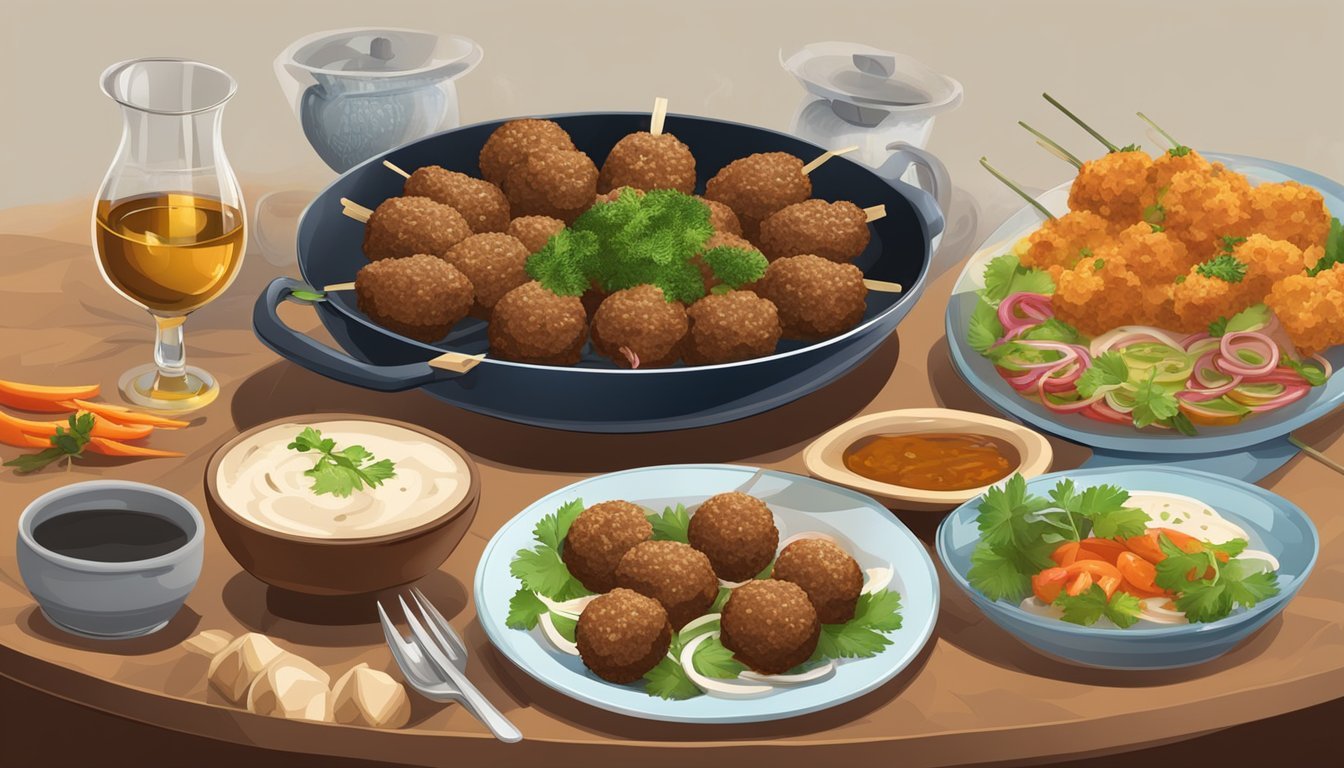Best Way to Reheat Lamb Kofta
Tips for Preserving Its Flavorful Punch
Lamb kofta, a cherished dish with Middle Eastern origins, is known for its rich blend of spices and herbs, bringing a symphony of flavors to the palate. Whether served fresh or as leftovers, the key to enjoying lamb kofta lies in the preservation of its succulent texture and aromatic taste during reheating. For those seeking to savor their lamb kofta beyond its initial serving, mastering the technique of reheating this delicacy is essential.
The process of reheating lamb kofta requires a careful approach to avoid overcooking, which can lead to dry and unappetizing meatballs. A variety of methods can be employed to warm up these spiced morsels, each with its own merits. Utilizing the oven is a popular way to reheat lamb kofta, where a low and steady temperature can heat the meatballs evenly without sapping their moisture.
Understanding the nuances of these techniques not only ensures the restoration of the koftas' fresh-from-the-grill taste but also retains their juiciness. Whether through oven reheating or alternative methods, the goal remains the same: to achieve a reheated lamb kofta that closely mirrors the freshly cooked experience, with its spiced exterior and tender interior intact.
Understanding Lamb Kofta
Lamb Kofta is a traditional Middle Eastern dish that blends spiced ground lamb into tender meatballs or skewers. Mastery of its ingredients and spices is key to appreciating its rich flavors.
Defining Kofta
Kofta refers to a family of meatball or meatloaf dishes found in Middle Eastern, South Asian, and Balkan cuisines. Lamb Kofta, specifically, is typically made with ground lamb that is molded around a skewer and grilled but can also be formed into balls and baked or fried. Originating from the Arabic word "كفتة" (kafta), it translates to "to grind" or "to mince," indicating the use of ground meat in the preparation.
Kofta Ingredients and Spices
The success of a Lamb Kofta lies in the quality of its ingredients and the blend of spices used to season it. The primary ingredient is ground lamb, known for its distinctive and robust flavor. Here's a snapshot of the essential spices that are often used:
Cumin: Adds a warm, earthy tone.
Paprika: Imparts a sweet, smoky essence.
Coriander: Brings a slightly citrusy, nutty flavor.
Cinnamon: Introduces a hint of sweet, woody warmth.
These spices, along with salt and pepper, create a complex taste profile that is both aromatic and deeply savory. Other kofta ingredients may include finely chopped onions, garlic, parsley, and sometimes mint, for an additional burst of freshness. The precise blend of spices and herbs infused in the ground lamb is crucial for the kofta to achieve its traditional savory taste.
Preparation Steps Before Reheating
To ensure the lamb kofta retains its spiced and savory taste, proper storage and thawing are essential. These steps prevent moisture loss and keep the meat lean and flavorful.
Storing Leftover Lamb Kofta
Storing leftover lamb kofta correctly is crucial for maintaining its quality. The leftovers should be cooled to room temperature before storage to prevent bacterial growth. Once cooled, wrap the kofta tightly in plastic wrap or aluminum foil to retain moisture. For best results, place the wrapped kofta in an airtight container and then store it in the refrigerator if they are to be reheated within a few days, or in the freezer for longer preservation.
Refrigerator Storage:
Temperature: below 40°F (4°C)
Storage Time: consumed within 3-4 days
Freezer Storage:
Temperature: 0°F (-18°C) or colder
Storage Time: up to 3 months for best quality
Thawing Frozen Kofta
Thawing the kofta gradually is key to keeping its texture and flavors intact. Transfer the frozen lamb kofta from the freezer to the refrigerator at least 24 hours before reheating. This slow thaw ensures that the kofta retains moisture and remains lean without becoming waterlogged. If a quicker thaw is needed, submerge the sealed kofta in cold water, changing the water every 30 minutes. Avoid using the microwave for thawing, as this can lead to uneven heating and a loss of texture.
Recommended Thawing Methods:
Refrigerator: 24 hours prior to reheating, depending on quantity
Cold Water Submersion: approximately 1 hour or less, with water changes
Reheating Techniques
Reheating lamb kofta requires careful attention to preserve its spiced and savory flavors. Various methods suit different needs and preferences, depending on the equipment available and the desired texture.
Oven Reheating
Reheating lamb kofta in the oven is a method that ensures even warmth without overcooking. Preheat the oven to 300°F and place the kofta on a wire rack over a baking sheet. Covering them with foil helps retain moisture. A meat thermometer can check for a safe internal temperature of 165°F, usually achieved within 10-20 minutes.
Stovetop Reheating
For stovetop reheating, a skillet or pan can warm the kofta with the addition of some stock or water to add moisture. On medium heat, one should frequently turn the kofta to ensure they heat thoroughly without drying out. The process should take about 5-10 minutes.
Microwave Reheating
When using a microwave, place kofta on a microwave-safe plate and cover with a damp paper towel. Reheating lamb kofta in the microwave in 30-second intervals with a medium setting will warm the kofta, and they should be checked frequently to avoid overcooking.
Air Fryer Reheating
An air fryer can reheat lamb kofta quickly while maintaining a crispy exterior. Preheat the air fryer to 350°F and arrange the kofta in a single layer in the basket. They typically require 3-4 minutes to heat through, with shaking of the basket halfway through to ensure even reheating.
Keeping Lamb Kofta Moist and Flavorful
When reheating lamb kofta, maintaining the moisture and preserving the rich spices are essential for enjoying the dish as if it's freshly made. By utilizing liquids and covering the meat during the reheating process, one can ensure that these savory meatballs stay succulent.
Using Liquids and Gravy
To help retain moisture, reheating lamb in gravy or a seasoned liquid is an effective method. Lamb kofta's spiced flavors are enhanced when they're gently simmered in a gravy or a mixture of stock and spices. For individual slices or koftas, they can be nestled in a skillet with hot stock or a robust gravy and warmed over low heat, which allows them to absorb flavors while preventing them from drying out.
Option 1: Submerge kofta in hot stock
Option 2: Warm in gravy to enhance flavor
Covering While Reheating
Securing moisture is also about how one covers the koftas while reheating. Covering with foil when reheating in an oven not only helps to distribute heat evenly but also traps steam, which adds moisture back into the koftas. For those utilizing a stovetop method, using a lid when warming koftas in liquid can result in the same effect. It's advisable to keep the temperature moderate and check periodically to avoid overheating.
For Oven: Cover the dish with aluminum foil
For Stovetop: Use a lid during simmering
In both instances, a drizzle of olive oil can add richness and prevent sticking, enhancing the dish's overall savoriness without compromising the authentic taste of the spices.
Serve and Enjoy
Once the Lamb Koftas are reheated perfectly, retaining their spiced and savory taste, it's time to turn them into a delectable meal. The key to an enjoyable eating experience is pairing them with the right sides and sauces that complement the kofta’s rich flavors.
Accompanying Sides
An essential part of the Lamb Kofta meal is the selection of sides. Pita bread serves as a staple accompaniment, ideal for wrapping or dipping with the koftas. For a more substantial side, rice or pilaf offers a neutral base that allows the kofta flavors to stand out. A Greek salad, with its fresh, crisp ingredients, provides a refreshing counterpoint to the richly spiced meat.
Pita Bread: A soft, yet slightly chewy option perfect for wraps.
Rice/Pilaf: A fluffy bed of rice both absorbs the flavors and supports the main dish.
Greek Salad: A bright mix of tomatoes, cucumber, olives, and feta cheese dressed in olive oil.
Creating Sauces and Dips
No Lamb Kofta dish is complete without its sauces and dips. Tahini sauce, with its creamy, nutty flavor is a classic choice that meshes well with the Middle Eastern flavors of the kofta. Providing a cooling complement, a cucumber yoghurt-based dip like tzatziki balances the warmth of the spices.
Tahini Sauce: Drizzle or dip, it's a rich sauce that accentuates the kofta's tastiness.
Tzatziki: A creamy and herby sauce that offers a refreshing taste.
By choosing the right sides and sauces, anyone can elevate their reheated Lamb Koftas from a simple reheated dish to a full, satisfying meal.
Food Safety Considerations
When reheating leftover lamb kofta, ensuring food safety is paramount. The lamb must be stored correctly prior to reheating to prevent bacterial growth. Refrigeration should occur within two hours of cooking, and the lamb should be kept at a temperature below 40°F.
For reheating, the lamb kofta should reach an internal temperature of 165°F. This can be accurately measured using a meat thermometer.
Below are key points to ensure food safety:
Safe Storage: Store lamb kofta in airtight containers to protect them from contamination and drying out.
Refrigeration Duration: Consume leftover lamb within three to four days.
Thorough Reheating:
Heat to the recommended 165°F.
Use a meat thermometer to check the temperature at the center of the kofta.
Reheating Step Temperature Check Start Cold (from fridge) During Increase gradually End 165°F (safe)
Hygiene:
Wash hands before handling the kofta.
Clean all utensils and surfaces before and after use to avoid cross-contamination.
Following these guidelines helps maintain the delicious and savory taste of the lamb kofta while ensuring it is safe to consume.
Pairing and Presentation Ideas
When reheating lamb kofta, a carefully chosen array of garnishes and thoughtful presentation not only enhances the dish's appeal but can also complement and elevate the spiced, savory taste.
Garnishes and Toppings
The right garnishes and toppings can transform reheated lamb kofta into a visually appealing and flavorful meal. One should consider adding fresh parsley for a pop of color and a light, herby freshness. To imbue a zesty kick, a drizzle of lemon juice is recommended. Moreover, dollops of tzatziki or lemon yogurt sauce, both made with Greek yogurt, add a creamy and tangy dimension that pairs seamlessly with the spices in the kofta.
Freshly chopped parsley
Lemon juice
Tzatziki:
Greek yogurt
Cucumber
Garlic
Dill
Lemon yogurt sauce:
Greek yogurt
Lemon juice
Garlic
Serving Suggestions
An array of side dishes can both complement the lamb kofta and provide a balanced meal. Traditionally, one may opt to serve the koftas with pita bread, creating a pocket or wrap that can be filled with additional flavors such as onion slices and lettuce for crunch. Accompanying the meat with a side of hummus provides a rich, nutty element, making each bite more interesting and robust.
Pita bread
Whole or halved
Fresh lettuce
Thinly sliced onions
Hummus:
Chickpeas
Tahini
Garlic
Lemon juice
By incorporating these garnishes and serving suggestions, one enhances the experience of enjoying lamb kofta, taking care to respect the integrity of the dish's spiced and savory profile.
Variations of Lamb Kofta
Lamb Kofta is a versatile dish with the potential for various adaptations to meet diverse taste preferences and dietary requirements. On this journey through the kofta cosmos, readers will discover how to swap meats and tinker with spice levels to customize their kofta experience.
Alternative Kofta Meats
While traditional kofta is made with ground lamb, it's quite common to see beef or chicken as substitutes, providing different flavors and textures. Beef offers a more robust and hearty taste, while chicken presents a lighter, leaner option.
Beef Kofta: Uses ground beef with a higher fat content to retain moisture and add richness.
Chicken Kofta: Incorporates ground chicken, often with the addition of breadcrumbs or panade to ensure tenderness.
Adjusting the Spice Level
Kofta's spiciness can be dialed up or down using various ingredients to cater to one's heat tolerance or preference.
To increase the heat:
Cayenne Pepper: A pinch can add significant heat without overwhelming the kofta's other flavors.
Spicy Chili Blends: Creating a custom spice mix can tailor the spiciness to precise tastes.
To create a milder kofta:
Black Pepper: Offers a subtle warmth that's less intense than chili peppers.
Herb Focus: Utilizing herbs over spices can produce a flavor-packed kofta without the heat.
Cultural Significance and Variations
Lamb Kofta carries the essence of rich culinary traditions, blending Middle Eastern spices into succulent kebabs. This dish is not only a testament to regional tastes but also to the adaptation of recipes across cultures.
Middle Eastern Kofta
In the Middle East, Kofta is a staple, reflecting the region's palate through a harmonious mix of spices like baharat and garam masala. Often featuring cardamom, cinnamon, and cloves, these minced meat kebabs showcase an array of cultural flavors.
Common Spices:
Black Pepper: Elevates heat.
Cinnamon: Adds sweetness with warmth.
Cloves: Imparts a bold, aromatic taste.
Nutmeg: Provides subtle spice and depth.
Paprika: Brings smokiness and color.
Traditional Accompaniments:
Mejadra: A seasoned rice and lentils dish that complements the savory profile of Kofta.
Cooking Methods: Kofta kebabs can be grilled, baked, or pan-fried, each technique imbuing the dish with a distinctive texture and flavor.
Greek Influence
Greek variations of Kofta introduce a Mediterranean twist by incorporating ingredients like sun-dried tomatoes, Kalamata olives, and feta cheese. This adaptation marries the boldness of Middle Eastern recipes with the zesty and herbaceous notes typical of Greek cuisine.
Flavor Enhancers:
Feta Cheese: Adds creaminess and a tangy edge.
Sun-Dried Tomatoes: Offer a hint of sweetness and acidity.
Olives: Contribute a briny flavor.
Key Spice:
Coriander: This spice is pervasive in the Greek version, providing a lemony-sage flavor that brightens the lamb's richness.

